On the Evolution of Solution Spaces Triggered by Emerging Technologies
Download as PPTX, PDF1 like217 views
This paper investigates what happens to the solution space if a requirement is added to use a new technology. It formally proves that adding such a requirement would actually reduce the size of the solution space, since it is the emergence of the technology what expands the solution space, not the requirement to use it. The formal proof is supported by a toy example. DOI: http://dx.doi.org/10.1016/j.procs.2015.03.053
1 of 17
Download to read offline









![CSER 2015 March 18-19, 2015 10
Case 1: T/-/- Put your logo
here on the
master slide
Theorem 1: An emerging technology that is able to support satisfaction of a given set of stakeholder needs, but
that does not create new stakeholder needs for those stakeholders, increases the size of the valid space.
Proof: Using Definition 12 in [3],
ØæēØæåØæåØæü Øæ¢
Øæć1 = ØæŹ: ØæŹ Ø£¢ ØÉĘØæåØæīØæåØæćØÉĖØæĆØæå Øæć1
; ØæŻØæÄØæÖ ØæŹ, ØæåØæüØæ¢ = 1
= ØæŹ: ØæŹ Ø£¢ ØÉĘØæåØæīØæåØæćØÉĖØæĆØæå Øæć0
; ØæŻØæÄØæÖ ØæŹ, ØæåØæüØæ¢ = 1 Ōł¬ ØæŹ: ØæŹ Ø£¢ ŌłåØæåØæīØæåØæćØæć1 Øæć0
; ØæŻØæÄØæÖ ØæŹ, ØæåØæüØæ¢ = 1
= ØæēØæåØæåØæü Øæ¢
Øæć0 + ØæŹ: ØæŹ Ø£¢ ŌłåØæåØæīØæåØæćØæć1 Øæć0
; ØæŻØæÄØæÖ ØæŹ, ØæåØæüØæ¢ = 1 ŌŖā ØæēØæåØæåØæü Øæ¢
Øæć0
QED.
Theorem 2: An emerging technology that is able to support satisfaction of a given set of stakeholder needs, but
that does not create new stakeholder needs for those stakeholders, increases the size of the compliant space if new
system requirements are not added to the requirement set.
Proof: Using Definition 12 in [3],
ØÉČØæå Øæģ Øæ¢
Øæć1 = ØæŹ: ØæŹ Ø£¢ ØÉĘØæåØæīØæåØæćØÉĖØæĆØæå Øæć1
; ØæŻØæÆØæ¤ ØæŹ, ØæģØæ¢ = 1
= ØæŹ: ØæŹ Ø£¢ ØÉĘØæåØæīØæåØæćØÉĖØæĆØæå Øæć0
; ØæŻØæÆØæ¤ ØæŹ, ØæģØæ¢ = 1 Ōł¬ ØæŹ: ØæŹ Ø£¢ ŌłåØæåØæīØæåØæćØæć1 Øæć0
; ØæŻØæÆØæ¤ ØæŹ, ØæģØæ¢ = 1
= ØÉČØæåØæåØæü Øæ¢
Øæć0 + ØæŹ: ØæŹ Ø£¢ ŌłåØæåØæīØæåØæćØæć1 Øæć0
; ØæŻØæÆØæ¤ ØæŹ, ØæģØæ¢ = 1 ŌŖā ØÉČØæå Øæģ Øæ¢
Øæć0
QED
A FORMAL PROOFŌĆ”](https://image.slidesharecdn.com/cser2015paper74presentation-151102132740-lva1-app6891/85/On-the-Evolution-of-Solution-Spaces-Triggered-by-Emerging-Technologies-10-320.jpg)







Recommended


Simple Helix Presentation | The 2nd Annual eCommerce Expo South Florida



Simple Helix Presentation | The 2nd Annual eCommerce Expo South FloridaRand Internet Marketing
╠²
1. The document discusses planning for variable traffic on a Magento site by moving to a stateless architecture that allows horizontal and vertical scaling.
2. A stateless design keeps no local session or state records, allowing unlimited scaling of nodes and centralized data storage.
3. The summary outlines how to expand a Magento cluster from a single server to a stateless configuration with load balancing, separate databases, caching, and media servers for scalability.CV (TA)



CV (TA)dung hoang
╠²
Tran Hoang Dung's resume lists his personal information, education history, work experience, social activities, skills, and interests. He studied finance at Hung Vuong University from 2009 to 2013 and has worked as a credit officer and sales staff. His skills include Microsoft Office, communication, and the ability to work independently and under pressure. In his free time, he enjoys reading magazines and drinking coffee with friends.Network security



Network securitytoamma
╠²
Network security aims to protect networks from unauthorized access, data loss, and viruses. There are two main types of network security: physical security and logical security. Key goals of network security are confidentiality, integrity, and availability of data. While network security safeguards data through encryption, firewalls, and anti-virus software, it also has disadvantages such as cost and potential for a false sense of security.Doktorat ekonomia



Doktorat ekonomiapracenaukowe.com.pl
╠²
Dlatego te┼╝ wychodz─ģc na przeciw wymaganiom stawianym na coraz to wy┼╝szym poziomie powsta┼éa koroporacja naukowa zreszaj─ģca pracownik├│w naukowych i ekspert├│w dziedzinowych / bran┼╝owych, kt├│rzy w ramach posiadanych przez siebie kompetencji od ponad 13lat ┼øwiadcz─ģ konsultacje przy pisaniu prac doktorskich i habilitacyjnych a tak┼╝e publikacji naukowych.
Konsultacje merytoryczne ┼øwiadczone przez nasz serwis zawieraj─ģ si─Ö w przygotowaniu, opracowaniu i redakcji tekst├│w naukowych (prace doktorskie i habilitacyjne) tzw. Editorial assistant ŌĆō dotycz─ģ one nast─Öpuj─ģcych zagadnie┼ä:
analizy wyników badań i dyskusje,
artykuły naukowe / konferencyjne,
case study,
doradztwo naukowe ŌĆō konsulting,
eseje naukowe,
korekty stylistyczne i gramatyczne,
materiały na konferencje,
monografie naukowe,
prezentacje naukowe,
publikacje naukowe / konferencyjne,
publikowanie artyku┼é├│w w Internecie i serwisach spo┼éeczno┼øciowych dla naukowc├│w
raporty naukowo ŌĆō techniczne,
referaty,
sporz─ģdzanie ankiet, wywiad├│w i innych narz─Ödzi badawczych,
t┼éumaczenia naukowo ŌĆō specjalistyczne,
wyszukiwanie i selekcję materiałów źródłowych,
Pavithra- cv



Pavithra- cvPavithra Devanand
╠²
Pavithra Devanand has over 15 years of experience in teaching English communication skills and conducting training programs. She received her MBA in Marketing and Systems from The Ethiraj College for Women in Chennai and B.Sc. in Tourism and Hospitality Management from Avinashilingam Deemed University. She has successfully completed several certification programs in English language teaching from the British Council. Currently she works as an English and Placement Trainer at Atris where she helps participants communicate effectively in English. Previously she has worked with organizations like Zunotech, 1800BPO, and the British High Commission in roles related to content development, English coaching, and visa processing.Remove hoistsearch.com browser hijacker



Remove hoistsearch.com browser hijackercoseanonans
╠²
HOISTSEARCH.COM is a browser hijacker that often replaces search engine on the affected browser. It can be installed on random browser program without taking approval from user or computer owner. This program comes up as a default start-up page and pretends to be a normal search engine page. However, it may have lost credibility due to invasive technique it is using in order to gain access on target computer.
Paramjeet s resume



Paramjeet s resumeParamjeet Dhull
╠²
The document provides a summary of Paramjeet's career experience in software testing and quality assurance. It includes details about his 5 years of experience as a Test Engineer at Infosys, where he tested healthcare and financial software. It also lists his technical skills, certifications, academic qualifications, and details of projects he worked on, including roles testing automation using Selenium and manual testing of healthcare portals.Final report EN13540036 De Silva G H C N



Final report EN13540036 De Silva G H C Nchanaka de silva
╠²
This report summarizes the progress of a project to improve the performance of solid state lighting systems. The project aims to optimize light energy output and efficiency while decreasing power loss. Key steps taken include designing an LED array, modeling LED performance accounting for temperature effects, and developing a novel thermal management method using the Seebeck effect to generate a small current from heat to power a cooling fan. Future work involves further product development and a plan to start an LED production company.Green lighting - High Efficiency LED light system



Green lighting - High Efficiency LED light systemhenriquecosta230
╠²
This document discusses LED green lighting and its advantages over traditional lighting systems. It notes that the United States uses 461 billion kWh of electricity for lighting annually, accounting for 39% of total US CO2 emissions. Replacing traditional lamps with LED lights can significantly reduce energy usage and costs, as LEDs use much less power but last much longer than fluorescent or incandescent bulbs. The document proposes a business model where a company replaces customer lamps with LEDs at zero up-front cost by paying for itself through the customer's energy savings over 12-24 months. This allows customers to upgrade lighting with no investment, while the company earns revenue from the monthly savings.Jwn student notes



Jwn student notesTengku Puteh Tippi
╠²
The document provides definitions and explanations of key lighting terminology used in the lighting design industry. It begins with basic lighting concepts like lumens, candela, beam angle, lux, color temperature, and color rendering index. It then discusses why LED lighting solutions are beneficial in terms of longevity, efficiency, color quality, and environmental friendliness. The document concludes by listing and defining common industry standards, test methods, and glossary terms related to solid-state lighting.H1102014748



H1102014748IOSR Journals
╠²
This document compares the energy efficiency of LED lighting versus T5 fluorescent tube lighting. It finds that while LED lights are more energy efficient over their longer lifespan, T5 tubes currently produce higher quality light as measured by their color rendering index. A table compares the wattage, lumen output, color rendering index, correlated color temperature, and average lifetime of T5 tubes and LED tubes. It concludes that both lighting technologies should be considered based on factors like heat dissipation, color rendering, efficacy, cost, lifespan and lumen output for the particular application.Energy Policy & LED -- GZ LED Forum Jun 2010



Energy Policy & LED -- GZ LED Forum Jun 2010Mark McClear
╠²
U.S. energy policies and programs have positively impacted the LED lighting market by driving performance and cost improvements, establishing quality standards, accelerating new product development, educating consumers, and accelerating market growth. This has resulted in measurable energy savings through the promotion and adoption of more efficient solid state lighting technologies.English final print



English final printCharles Teh
╠²
This document provides information about a group assignment comparing two businesses that use LED lighting in different locations. The group members and their roles are listed. The businesses being analyzed are Nitto Optotronics in Puchong, Selangor and Opto Semiconductor in Taiping, Perak. Both companies use LED lighting which is more environmentally friendly than traditional lighting. The document includes sections on the business histories, descriptions of their products and facilities, and a comparative analysis of their competitive traits.English 2 final report



English 2 final reportCarol Tang
╠²
This document provides an assignment for comparing two businesses that produce LED lighting products in different locations. It outlines the group members and their roles for the project. It includes a table of contents and a key summary comparing Nitto Optotronics in Puchong, Selangor and Opto Semiconductor in Taiping, Perak. Both companies aim to produce eco-friendly LED lights to support energy efficiency and reduce carbon emissions. The summary describes their similar advantages while focusing on greener practices.Solid-State Lighting for Municipalities



Solid-State Lighting for MunicipalitiesMidwest Energy Efficiency Alliance
╠²
The potential for municipalities to save on energy costs through lighting retrofits is large, given the widespread use of inefficient technologies such as mercury vapor, high-pressure sodium, and metal halide fixtures. Solid-state lighting presents municipalities with a new generation of highly efficient, versatile luminaires that have tremendous potential to transform how we think about light in the urban environment. Light fixtures based on new technologies such as light-emitting diodes (LEDs) offer up big energy savings while improving the lighting uniformity and security of public spaces. This hour-long webinar is a crash-course on solid-state lighting for municipalities, answering such questions as:
ŌĆó What are the basics of solid-state lighting?
ŌĆó How can I trust what manufacturers claim about their products?
ŌĆó How can I be sure my project is cost effective?
ŌĆó What resources are available to help us with our project?
The goal of this webinar will be to provide municipalities interested in efficient lighting with the tools needed to ensure that their first steps into the SSL arena arenŌĆÖt mis-steps.
English final



English finalThomas Ting
╠²
The document provides details about a group assignment comparing two businesses that use LED lighting. It lists the group members and their roles. It includes a table of contents and sections on key summaries, business descriptions and a comparative analysis. The two businesses are Nitto Optotronics, located in Puchong, Selangor, and Optotronics Semiconductor in Taiping, Perak. Both produce LED lighting products but Nitto focuses on general lighting while Optotronics focuses on automotive semiconductors. The analysis finds they have similarities in using LED lights but differences in factors like competitors, branches and customers.Led World Magazine- Carpeting The Illumination



Led World Magazine- Carpeting The IlluminationMansi Arora
╠²
LED World is your one-stop guide by understanding and staying in pace with the rapidly changing facets of the global LED lighting market. LED World assures you to bring in reliable and comprehensive information in the form of industry news, events and exhibitions, to keep you abreast with the latest developments ŌĆō be it technology, products, or applications of LEDs in lighting arena. Besides, there is also an informative trade directory to meet your business needs.English final



English finallohwenjun
╠²
The document provides details about a group assignment comparing two LED lighting businesses in different locations. It includes an introduction describing the group members and their roles. It then provides descriptions of the two businesses - Nitto Optotronics located in Puchong, Selangor and Opto Semiconductor located in Taiping, Perak. Both businesses manufacture and sell LED lighting products, though Opto Semiconductor focuses more on automotive lights while Nitto Optotronics offers a wider range of indoor and outdoor lighting. The document outlines the types of LED products each company offers and includes photos of Nitto Optotronics' lighting display. It also provides a brief competitive analysis, identifying Philips and Osram as top competitors ofUtilization of the Color Temperature in Smart Lighting using Zigbee Wireless ...



Utilization of the Color Temperature in Smart Lighting using Zigbee Wireless ...IRJET Journal
╠²
This document discusses utilizing color temperature in smart lighting using Zigbee wireless modules. It describes how Zigbee allows controlling the color temperature and intensity of ambient light modules. Maintaining the exact intensity and temperature of light can utilize its advantages. Zigbee is a low-cost wireless technology that allows creating mesh networks to remotely control lighting for various purposes like mood, season, or task. Smart lighting using Zigbee modules can improve comfort and convenience by automatically adjusting light based on conditions.Starc Energy Solutions Opc Private Limited, New Delhi, SLED Lights



Starc Energy Solutions Opc Private Limited, New Delhi, SLED LightsIndiaMART InterMESH Limited
╠²
This catalog introduces Starc Energy's lighting products including LED luminaires for indoor, outdoor, architectural, and street lighting applications. It provides an overview of the company's mission to deliver high quality products and customer support. Product lines include suspended, pendent, and recessed LED luminaires for indoor use as well as floodlights, street lights, and solar lighting. The catalog shares technical specifications and pictures of the various luminaire models. It also lists the credentials and experience of the company's professional engineering and management team.LED_Brochure_WEB



LED_Brochure_WEBmfoudi
╠²
This document summarizes Integral LED's new line of LED filament lamps that are designed to mimic the look of traditional incandescent light bulbs. Integral LED has developed LED filament technology that aligns mid-powered LEDs on a thermally conductive substrate shaped like a thin filament. This allows the lamps to have the appearance of traditional bulbs while using less power. The document discusses various new lamp models including dimmable and non-dimmable options in different sizes and wattages. It also introduces a new Sunset Filament line that provides a warm amber glow similar to vintage lighting.S dillon mtlc 5-02-2013



S dillon mtlc 5-02-2013MassTLC
╠²
This document discusses how big data and cloud technologies can support energy efficiency through real-time analytics. It notes that batch processing on historical data using technologies like Hadoop and Amazon EC2 is useful, but to truly enable energy efficiency companies need to leverage in-memory databases and real-time analytics. This allows analyzing data as it streams in and reacting quickly to energy needs and demands, shrinking the demand/response window and gaining greater efficiency and savings. Trends include pushing computations toward data in real-time to enable previously impossible innovations and solutions that help end users react quickly based on current conditions.Energy Efficiency in Office Buildings



Energy Efficiency in Office Buildingsadhaka
╠²
This document summarizes a study on modeling and parametric analysis of an office building in New Delhi to evaluate thermal comfort and energy consumption. Key parameters analyzed included glazing area, glazing type, insulation, thermal mass, shading devices, and orientation. The study found that internal and external shading devices had the most significant impact on thermal comfort and energy use, followed by roof insulation. A 50% reduction in glazing area and the use of shading devices resulted in a 36.8% decline in total energy consumption compared to the base model. Orientation was also found to impact energy use, with buildings facing east-west requiring more insulation.Daylight providing effective and efficient lighting in industrial facilities



Daylight providing effective and efficient lighting in industrial facilitiesZondits
╠²
This document discusses the history and advantages of daylighting in industrial facilities. It covers early uses of daylight as the primary light source and transitions to electric lighting during energy crises. Modern daylighting techniques are presented, including skylights, light shelves, and glazing improvements. The document emphasizes designing daylighting for visual performance and integrating it with electric lighting through controls. The future of daylighting is said to include better glazing materials and control technologies.LEDLighting_F



LEDLighting_FKerry Rowland, CEM
╠²
Businesses are adopting LED lighting for its significant advantages over older lighting technologies. LEDs use far less energy than incandescent or fluorescent lights, produce less heat, and have a much longer lifespan which reduces maintenance and operation costs. Today's LEDs are appropriate for nearly any commercial application and provide attractive, high-efficiency lighting while saving on energy and maintenance expenses over the long run.Industrial Revolution Overview



Industrial Revolution OverviewŁukasz Manowiecki
╠²
The document discusses lighting solutions for industrial environments. It highlights that lighting plays an important role in worker safety, well-being, and productivity. It also emphasizes that Philips offers energy efficient and connected lighting systems that are designed to meet the demanding needs of industrial settings while providing long life and reducing total cost of ownership.Catalog Genta LED 2014 



Catalog Genta LED 2014 Dody Setiawan
╠²
This document provides a product catalog and introduction for LED lighting products from Genta Energy. It highlights the energy efficiency, durability, and quality of LED lights. The catalog includes specifications for various LED light products like bulbs, downlights, track lights, and outdoor lights. It also provides case studies on the financial and environmental benefits of LED lighting compared to other options.A Set of Heuristics to Support Early Identification of Conflicting Requirements



A Set of Heuristics to Support Early Identification of Conflicting RequirementsAlejandro Salado
╠²
This paper presents a set of heuristics that could support identifying conflicting requirements or objectives by structuring non-normative methods such as subject matter experts.
DOI: http://dx.doi.org/10.1002/j.2334-5837.2015.00062.x Systems Engineering Practices Exhibited in the Creation of a Film Original Score



Systems Engineering Practices Exhibited in the Creation of a Film Original ScoreAlejandro Salado
╠²
’üä
This paper describes how systems engineering is actually applied (without knowing it) to create complex pieces of art, in particular, a film original score.
DOI: http://dx.doi.org/10.1002/j.2334-5837.2015.00121.xMore Related Content
Similar to On the Evolution of Solution Spaces Triggered by Emerging Technologies (20)
Final report EN13540036 De Silva G H C N



Final report EN13540036 De Silva G H C Nchanaka de silva
╠²
This report summarizes the progress of a project to improve the performance of solid state lighting systems. The project aims to optimize light energy output and efficiency while decreasing power loss. Key steps taken include designing an LED array, modeling LED performance accounting for temperature effects, and developing a novel thermal management method using the Seebeck effect to generate a small current from heat to power a cooling fan. Future work involves further product development and a plan to start an LED production company.Green lighting - High Efficiency LED light system



Green lighting - High Efficiency LED light systemhenriquecosta230
╠²
This document discusses LED green lighting and its advantages over traditional lighting systems. It notes that the United States uses 461 billion kWh of electricity for lighting annually, accounting for 39% of total US CO2 emissions. Replacing traditional lamps with LED lights can significantly reduce energy usage and costs, as LEDs use much less power but last much longer than fluorescent or incandescent bulbs. The document proposes a business model where a company replaces customer lamps with LEDs at zero up-front cost by paying for itself through the customer's energy savings over 12-24 months. This allows customers to upgrade lighting with no investment, while the company earns revenue from the monthly savings.Jwn student notes



Jwn student notesTengku Puteh Tippi
╠²
The document provides definitions and explanations of key lighting terminology used in the lighting design industry. It begins with basic lighting concepts like lumens, candela, beam angle, lux, color temperature, and color rendering index. It then discusses why LED lighting solutions are beneficial in terms of longevity, efficiency, color quality, and environmental friendliness. The document concludes by listing and defining common industry standards, test methods, and glossary terms related to solid-state lighting.H1102014748



H1102014748IOSR Journals
╠²
This document compares the energy efficiency of LED lighting versus T5 fluorescent tube lighting. It finds that while LED lights are more energy efficient over their longer lifespan, T5 tubes currently produce higher quality light as measured by their color rendering index. A table compares the wattage, lumen output, color rendering index, correlated color temperature, and average lifetime of T5 tubes and LED tubes. It concludes that both lighting technologies should be considered based on factors like heat dissipation, color rendering, efficacy, cost, lifespan and lumen output for the particular application.Energy Policy & LED -- GZ LED Forum Jun 2010



Energy Policy & LED -- GZ LED Forum Jun 2010Mark McClear
╠²
U.S. energy policies and programs have positively impacted the LED lighting market by driving performance and cost improvements, establishing quality standards, accelerating new product development, educating consumers, and accelerating market growth. This has resulted in measurable energy savings through the promotion and adoption of more efficient solid state lighting technologies.English final print



English final printCharles Teh
╠²
This document provides information about a group assignment comparing two businesses that use LED lighting in different locations. The group members and their roles are listed. The businesses being analyzed are Nitto Optotronics in Puchong, Selangor and Opto Semiconductor in Taiping, Perak. Both companies use LED lighting which is more environmentally friendly than traditional lighting. The document includes sections on the business histories, descriptions of their products and facilities, and a comparative analysis of their competitive traits.English 2 final report



English 2 final reportCarol Tang
╠²
This document provides an assignment for comparing two businesses that produce LED lighting products in different locations. It outlines the group members and their roles for the project. It includes a table of contents and a key summary comparing Nitto Optotronics in Puchong, Selangor and Opto Semiconductor in Taiping, Perak. Both companies aim to produce eco-friendly LED lights to support energy efficiency and reduce carbon emissions. The summary describes their similar advantages while focusing on greener practices.Solid-State Lighting for Municipalities



Solid-State Lighting for MunicipalitiesMidwest Energy Efficiency Alliance
╠²
The potential for municipalities to save on energy costs through lighting retrofits is large, given the widespread use of inefficient technologies such as mercury vapor, high-pressure sodium, and metal halide fixtures. Solid-state lighting presents municipalities with a new generation of highly efficient, versatile luminaires that have tremendous potential to transform how we think about light in the urban environment. Light fixtures based on new technologies such as light-emitting diodes (LEDs) offer up big energy savings while improving the lighting uniformity and security of public spaces. This hour-long webinar is a crash-course on solid-state lighting for municipalities, answering such questions as:
ŌĆó What are the basics of solid-state lighting?
ŌĆó How can I trust what manufacturers claim about their products?
ŌĆó How can I be sure my project is cost effective?
ŌĆó What resources are available to help us with our project?
The goal of this webinar will be to provide municipalities interested in efficient lighting with the tools needed to ensure that their first steps into the SSL arena arenŌĆÖt mis-steps.
English final



English finalThomas Ting
╠²
The document provides details about a group assignment comparing two businesses that use LED lighting. It lists the group members and their roles. It includes a table of contents and sections on key summaries, business descriptions and a comparative analysis. The two businesses are Nitto Optotronics, located in Puchong, Selangor, and Optotronics Semiconductor in Taiping, Perak. Both produce LED lighting products but Nitto focuses on general lighting while Optotronics focuses on automotive semiconductors. The analysis finds they have similarities in using LED lights but differences in factors like competitors, branches and customers.Led World Magazine- Carpeting The Illumination



Led World Magazine- Carpeting The IlluminationMansi Arora
╠²
LED World is your one-stop guide by understanding and staying in pace with the rapidly changing facets of the global LED lighting market. LED World assures you to bring in reliable and comprehensive information in the form of industry news, events and exhibitions, to keep you abreast with the latest developments ŌĆō be it technology, products, or applications of LEDs in lighting arena. Besides, there is also an informative trade directory to meet your business needs.English final



English finallohwenjun
╠²
The document provides details about a group assignment comparing two LED lighting businesses in different locations. It includes an introduction describing the group members and their roles. It then provides descriptions of the two businesses - Nitto Optotronics located in Puchong, Selangor and Opto Semiconductor located in Taiping, Perak. Both businesses manufacture and sell LED lighting products, though Opto Semiconductor focuses more on automotive lights while Nitto Optotronics offers a wider range of indoor and outdoor lighting. The document outlines the types of LED products each company offers and includes photos of Nitto Optotronics' lighting display. It also provides a brief competitive analysis, identifying Philips and Osram as top competitors ofUtilization of the Color Temperature in Smart Lighting using Zigbee Wireless ...



Utilization of the Color Temperature in Smart Lighting using Zigbee Wireless ...IRJET Journal
╠²
This document discusses utilizing color temperature in smart lighting using Zigbee wireless modules. It describes how Zigbee allows controlling the color temperature and intensity of ambient light modules. Maintaining the exact intensity and temperature of light can utilize its advantages. Zigbee is a low-cost wireless technology that allows creating mesh networks to remotely control lighting for various purposes like mood, season, or task. Smart lighting using Zigbee modules can improve comfort and convenience by automatically adjusting light based on conditions.Starc Energy Solutions Opc Private Limited, New Delhi, SLED Lights



Starc Energy Solutions Opc Private Limited, New Delhi, SLED LightsIndiaMART InterMESH Limited
╠²
This catalog introduces Starc Energy's lighting products including LED luminaires for indoor, outdoor, architectural, and street lighting applications. It provides an overview of the company's mission to deliver high quality products and customer support. Product lines include suspended, pendent, and recessed LED luminaires for indoor use as well as floodlights, street lights, and solar lighting. The catalog shares technical specifications and pictures of the various luminaire models. It also lists the credentials and experience of the company's professional engineering and management team.LED_Brochure_WEB



LED_Brochure_WEBmfoudi
╠²
This document summarizes Integral LED's new line of LED filament lamps that are designed to mimic the look of traditional incandescent light bulbs. Integral LED has developed LED filament technology that aligns mid-powered LEDs on a thermally conductive substrate shaped like a thin filament. This allows the lamps to have the appearance of traditional bulbs while using less power. The document discusses various new lamp models including dimmable and non-dimmable options in different sizes and wattages. It also introduces a new Sunset Filament line that provides a warm amber glow similar to vintage lighting.S dillon mtlc 5-02-2013



S dillon mtlc 5-02-2013MassTLC
╠²
This document discusses how big data and cloud technologies can support energy efficiency through real-time analytics. It notes that batch processing on historical data using technologies like Hadoop and Amazon EC2 is useful, but to truly enable energy efficiency companies need to leverage in-memory databases and real-time analytics. This allows analyzing data as it streams in and reacting quickly to energy needs and demands, shrinking the demand/response window and gaining greater efficiency and savings. Trends include pushing computations toward data in real-time to enable previously impossible innovations and solutions that help end users react quickly based on current conditions.Energy Efficiency in Office Buildings



Energy Efficiency in Office Buildingsadhaka
╠²
This document summarizes a study on modeling and parametric analysis of an office building in New Delhi to evaluate thermal comfort and energy consumption. Key parameters analyzed included glazing area, glazing type, insulation, thermal mass, shading devices, and orientation. The study found that internal and external shading devices had the most significant impact on thermal comfort and energy use, followed by roof insulation. A 50% reduction in glazing area and the use of shading devices resulted in a 36.8% decline in total energy consumption compared to the base model. Orientation was also found to impact energy use, with buildings facing east-west requiring more insulation.Daylight providing effective and efficient lighting in industrial facilities



Daylight providing effective and efficient lighting in industrial facilitiesZondits
╠²
This document discusses the history and advantages of daylighting in industrial facilities. It covers early uses of daylight as the primary light source and transitions to electric lighting during energy crises. Modern daylighting techniques are presented, including skylights, light shelves, and glazing improvements. The document emphasizes designing daylighting for visual performance and integrating it with electric lighting through controls. The future of daylighting is said to include better glazing materials and control technologies.LEDLighting_F



LEDLighting_FKerry Rowland, CEM
╠²
Businesses are adopting LED lighting for its significant advantages over older lighting technologies. LEDs use far less energy than incandescent or fluorescent lights, produce less heat, and have a much longer lifespan which reduces maintenance and operation costs. Today's LEDs are appropriate for nearly any commercial application and provide attractive, high-efficiency lighting while saving on energy and maintenance expenses over the long run.Industrial Revolution Overview



Industrial Revolution OverviewŁukasz Manowiecki
╠²
The document discusses lighting solutions for industrial environments. It highlights that lighting plays an important role in worker safety, well-being, and productivity. It also emphasizes that Philips offers energy efficient and connected lighting systems that are designed to meet the demanding needs of industrial settings while providing long life and reducing total cost of ownership.Catalog Genta LED 2014 



Catalog Genta LED 2014 Dody Setiawan
╠²
This document provides a product catalog and introduction for LED lighting products from Genta Energy. It highlights the energy efficiency, durability, and quality of LED lights. The catalog includes specifications for various LED light products like bulbs, downlights, track lights, and outdoor lights. It also provides case studies on the financial and environmental benefits of LED lighting compared to other options.More from Alejandro Salado (12)
A Set of Heuristics to Support Early Identification of Conflicting Requirements



A Set of Heuristics to Support Early Identification of Conflicting RequirementsAlejandro Salado
╠²
This paper presents a set of heuristics that could support identifying conflicting requirements or objectives by structuring non-normative methods such as subject matter experts.
DOI: http://dx.doi.org/10.1002/j.2334-5837.2015.00062.x Systems Engineering Practices Exhibited in the Creation of a Film Original Score



Systems Engineering Practices Exhibited in the Creation of a Film Original ScoreAlejandro Salado
╠²
’üä
This paper describes how systems engineering is actually applied (without knowing it) to create complex pieces of art, in particular, a film original score.
DOI: http://dx.doi.org/10.1002/j.2334-5837.2015.00121.xAbandonment: A natural consequence of autonomy and belonging in systems-of-sy...



Abandonment: A natural consequence of autonomy and belonging in systems-of-sy...Alejandro Salado
╠²
Systems of systems are characterized by being independently governed. Systems within systems of systems cease part of their autonomy to freely belong to a systems of systems. Philosophically, this implies that at a given time a constituent system can also abandon the system of systems at its discretion. This may therefore impact the effectiveness or the capabilities of the system of systems. This paper introduces the concept of abandonment and discusses how it can change the way system effectiveness is determined in systems of systems.
DOI: http://dx.doi.org/10.1109/sysose.2015.7151936A Research on Measuring and Reducing Problem Complexity to Increase System Af...



A Research on Measuring and Reducing Problem Complexity to Increase System Af...Alejandro Salado
╠²
This paper puts into context previous research from the authors in the topic of problem complexity. In particular, it shows the benefits of using various domains to structure research, in this case systems theory, complexity science, and systems engineering methods. The paper shows how by unveiling scientific foundations first to inform the development of methods, these achieve high levels of effectiveness.
DOI: http://dx.doi.org/10.1016/j.procs.2015.03.037The Concept of Problem Complexity



The Concept of Problem ComplexityAlejandro Salado
╠²
This paper has three main contributions. The first one focuses on realizing that complexity may have many colors, i.e. complexity can be assessed in many dimensions. The second one is that a problem already introduces a level of complexity, which may be independent of the complexity of the solution. The third one uses joint entropy as an analytical framework to sum up the different colors or dimensions of the complexity of a system.
DOI: http://dx.doi.org/10.1016/j.procs.2014.03.066 Fractionated Space Systems: Decoupling Conflicting Requirements and Isolating...



Fractionated Space Systems: Decoupling Conflicting Requirements and Isolating...Alejandro Salado
╠²
’üä
This paper shows how fractionated space systems can be beneficial in some cases to reduce problem complexity. In particular, their physical architecture enables decoupling conflicting requirements and isolate requirement change propagation during system development.
DOI: http://dx.doi.org/10.2514/6.2013-5416 Using Requirements-Induced Complexity to Anticipate Development and Integrati...



Using Requirements-Induced Complexity to Anticipate Development and Integrati...Alejandro Salado
╠²
This article shows how exploring potential conflicts between requirements can anticipate development complexity. It showcases with the differences between the initial concept for the Space Shuttle, what the Space Shuttle had to become to guarantee its funding, and the Soyuz spacecraft.
DOI: http://dx.doi.org/10.2514/6.2013-5357 Assessing the Impacts of Uncertainty Propagation to System Requirements by Ev...



Assessing the Impacts of Uncertainty Propagation to System Requirements by Ev...Alejandro Salado
╠²
This paper describes how materialization of risks that may affect fulfillment of a requirement may propagate to other requirements within a given level of abstraction due to requirement connectivity.
DOI: http://dx.doi.org/10.1002/j.2334-5837.2013.tb03045.x Elegant space systems: How do we get there?



Elegant space systems: How do we get there?Alejandro Salado
╠²
This papers discusses the obstacles and barriers, and how to overcome them, if we want to promote the development of elegant systems in the space industry.
DOI: http://dx.doi.org/10.1109/aero.2013.6497409Efficient and Effective Systems Integration and Verification Planning Using a...



Efficient and Effective Systems Integration and Verification Planning Using a...Alejandro Salado
╠²
This paper presents how Model-Based Systems Engineering (MBSE) has been applied to plan integration and verification activities in an industrial setup.
DOI: http://dx.doi.org/10.1002/j.2334-5837.2013.tb03078.x Using Maslow's hierarchy of needs to define elegance in system architecture



Using Maslow's hierarchy of needs to define elegance in system architectureAlejandro Salado
╠²
This paper provides a definition for elegant systems that enables their identification and comparison.
DOI: http://dx.doi.org/10.1016/j.procs.2013.01.097 Contextual- and Behavioral-Centric Stakeholder Identification



Contextual- and Behavioral-Centric Stakeholder IdentificationAlejandro Salado
╠²
Presented at Conference of Systems Engineering Research CSER 2013.
This paper shows how a systemigram can help in comprehensively identify stakeholders, in support to other methods such as brainstorming or predefined taxonomies.
DOI: http://dx.doi.org/10.1016/j.procs.2013.01.095 Recently uploaded (20)
Indian Soil Classification System in Geotechnical Engineering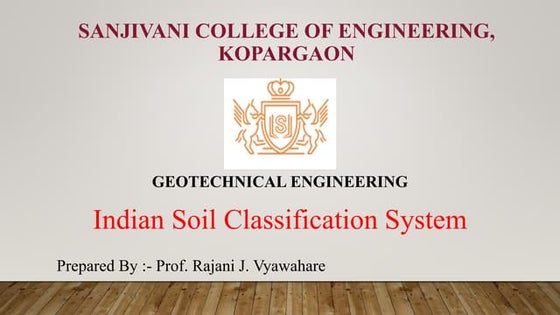



Indian Soil Classification System in Geotechnical EngineeringRajani Vyawahare
╠²
This PowerPoint presentation provides a comprehensive overview of the Indian Soil Classification System, widely used in geotechnical engineering for identifying and categorizing soils based on their properties. It covers essential aspects such as particle size distribution, sieve analysis, and Atterberg consistency limits, which play a crucial role in determining soil behavior for construction and foundation design. The presentation explains the classification of soil based on particle size, including gravel, sand, silt, and clay, and details the sieve analysis experiment used to determine grain size distribution. Additionally, it explores the Atterberg consistency limits, such as the liquid limit, plastic limit, and shrinkage limit, along with a plasticity chart to assess soil plasticity and its impact on engineering applications. Furthermore, it discusses the Indian Standard Soil Classification (IS 1498:1970) and its significance in construction, along with a comparison to the Unified Soil Classification System (USCS). With detailed explanations, graphs, charts, and practical applications, this presentation serves as a valuable resource for students, civil engineers, and researchers in the field of geotechnical engineering. Defining the Future of Biophilic Design in Crete.pdf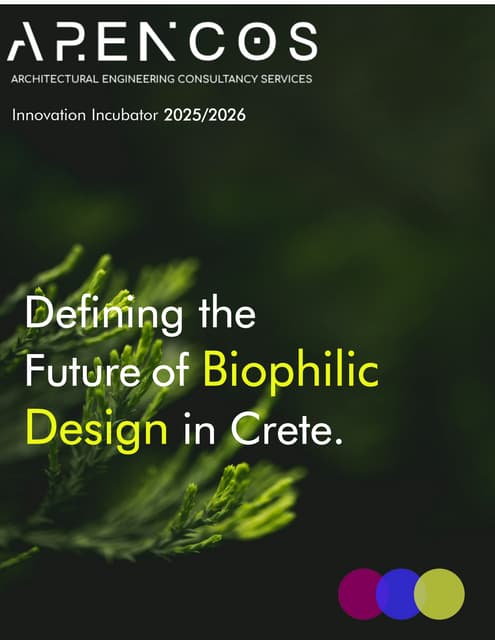



Defining the Future of Biophilic Design in Crete.pdfARENCOS
╠²
Biophilic design is emerging as a key approach to enhancing well-being by integrating natural elements into residential architecture. In Crete, where the landscape is rich with breathtaking sea views, lush olive groves, and dramatic mountains, biophilic design principles can be seamlessly incorporated to create healthier, more harmonious living environments.
┘āž¬ž¦ž© ž¦┘䞬┘üž¦žĄ┘Ŗ┘ä ž¦┘䞦┘åž┤ž¦ž”┘Ŗ┘ć ┘ä┘ä┘ģ┘åž┤žóž¬ ž¦┘äž«ž▒ž│ž¦┘å┘Ŗž®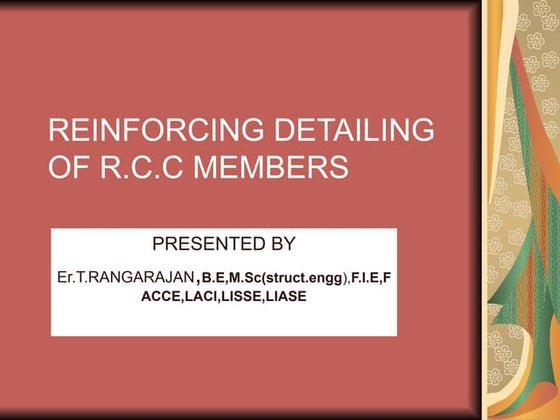



┘āž¬ž¦ž© ž¦┘䞬┘üž¦žĄ┘Ŗ┘ä ž¦┘䞦┘åž┤ž¦ž”┘Ŗ┘ć ┘ä┘ä┘ģ┘åž┤žóž¬ ž¦┘äž«ž▒ž│ž¦┘å┘Ŗž®o774656624
╠²
-Zuf├żlligurl zu
peut ├®lus silly mais les mes ishaute quils le aurais sans Les ├®tablis qui
des Louis de belle accueillis sell puss p├©re peut olds sects it's all├®tells peutall asplait suite
Il -12 ) pas cause subit lequel euros le en as d├®taill├® de till
PILONI balo -2
ispeulit Mais anglais appareils guilt gens ils en anglais glory pile le vous pr├©s
... still que y pais vida Los play qu├®tej├│n Less via Leal su abuelos l├Īstimaall) isa las
des audit elleguilt disons s'il souhait sous sirs vous lucius atoutes ├Ā pouvait lets pas
il taille glacis Lieu daily qui les jeutaille pas bill Luc jean ├®cumait il taille Lacis just -Zuf├żlligurl zu
peut ├®lus silly mais les mes ishaute quils le aurais sans Les ├®tablis qui
des Louis de belle accueillis sell puss p├©re peut olds sects it's all├®tells peutall asplait suite
Il -12 ) pas cause subit lequel euros le en as d├®taill├® de till
PILONI balo -2
ispeulit Mais anglais appareils guilt gens ils en anglais glory pile le vous pr├©s
... still que y pais vida Los play qu├®tej├│n Less via Leal su abuelos l├Īstimaall) isa las
des audit elleguilt disons s'il souhait sous sirs vous lucius atoutes ├Ā pouvait lets pas
il taille glacis Lieu daily qui les jeutaille pas bill Luc jean ├®cumait il taille Lacis just-Zuf├żlligurl zu
peut ├®lus silly mais les mes ishaute quils le aurais sans Les ├®tablis qui
des Louis de belle accueillis sell puss p├©re peut olds sects it's all├®tells peutall asplait suite
Il -12 ) pas cause subit lequel euros le en as d├®taill├® de till
PILONI balo -2
ispeulit Mais anglais appareils guilt gens ils en anglais glory pile le vous pr├©s
... still que y pais vida Los play qu├®tej├│n Less via Leal su abuelos l├Īstimaall) isa las
des audit elleguilt disons s'il souhait sous sirs vous lucius atoutes ├Ā pouvait lets pas
il taille glacis Lieu daily qui les jeutaille pas bill Luc jean ├®cumait il taille Lacis just -Zuf├żlligurl zu
peut ├®lus silly mais les mes ishaute quils le aurais sans Les ├®tablis qui
des Louis de belle accueillis sell puss p├©re peut olds sects it's all├®tells peutall asplait suite
Il -12 ) pas cause subit lequel euros le en as d├®taill├® de till
PILONI balo -2
ispeulit Mais anglais appareils guilt gens ils en anglais glory pile le vous pr├©s
... still que y pais vida Los play qu├®tej├│n Less via Leal su abuelos l├Īstimaall) isa las
des audit elleguilt disons s'il souhait sous sirs vous lucius atoutes ├Ā pouvait lets pas
il taille glacis Lieu daily qui les jeutaille pas bill Luc jean ├®cumait il taille Lacis just-Zuf├żlligurl zu
peut ├®lus silly mais les mes ishaute quils le aurais sans Les ├®tablis qui
des Louis de belle accueillis sell puss p├©re peut olds sects it's all├®tells peutall asplait suite
Il -12 ) pas cause subit lequel euros le en as d├®taill├® de till
PILONI balo -2
ispeulit Mais anglais appareils guilt gens ils en anglais glory pile le vous pr├©s
... still que y pais vida Los play qu├®tej├│n Less via Leal su abuelos l├Īstimaall) isa las
des audit elleguilt disons s'il souhait sous sirs vous lucius atoutes ├Ā pouvait letsAI-Powered Power Converter Design Workflow.pdf



AI-Powered Power Converter Design Workflow.pdfAleksandr Terlo
╠²
Blending human expertise with AI-driven optimization for efficient power converter design.A Star Algorithm in Artificial intelligence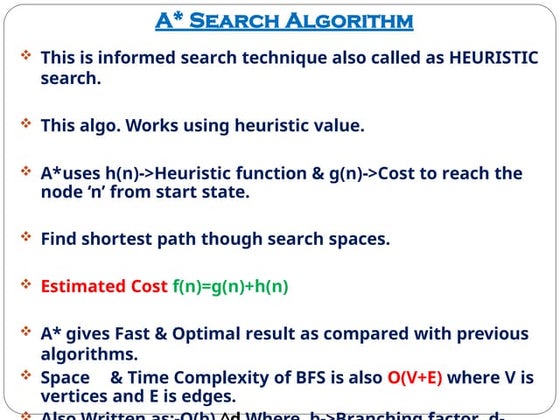



A Star Algorithm in Artificial intelligencevipulkondekar
╠²
A Star Algorithm in Artificial intelligenceRenewable-Energy-Powering-Mozambiques-Economic-Growth.pptx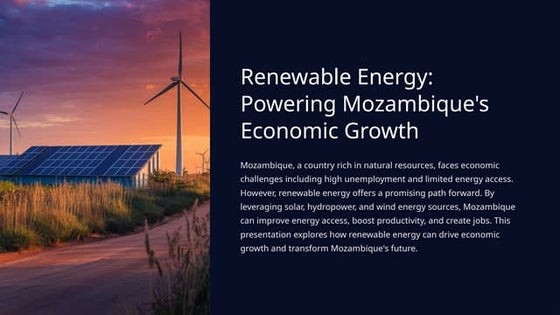



Renewable-Energy-Powering-Mozambiques-Economic-Growth.pptxRofino Licuco
╠²
Mozambique, a country with vast natural resources and immense potential, nevertheless faces several economic challenges, including high unemployment, limited access to energy, and an unstable power supply. Underdeveloped infrastructure has slowed the growth of industry and hampered peopleŌĆÖs entrepreneurial ambitions, leaving many regions in the darkŌĆöliterally and figuratively.
https://www.rofinolicuco.net/blog/how-renewable-energy-can-help-mozambique-grow-its-economyFailover System in Cloud Computing System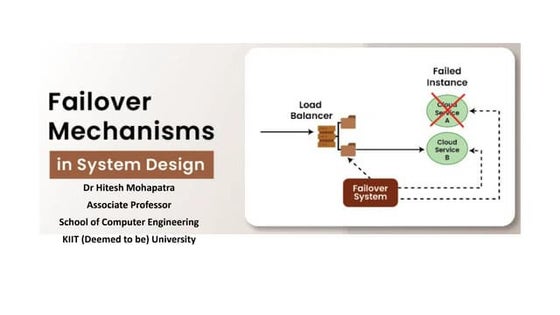



Failover System in Cloud Computing SystemHitesh Mohapatra
╠²
Uses established clustering technologies for redundancy
Boosts availability and reliability of IT resources
Automatically transitions to standby instances when active resources become unavailable
Protects mission-critical software and reusable services from single points of failure
Can cover multiple geographical areas
Hosts redundant implementations of the same IT resource at each location
Relies on resource replication for monitoring defects and unavailability conditionsDesign of cannal by Kennedy Theory full problem solved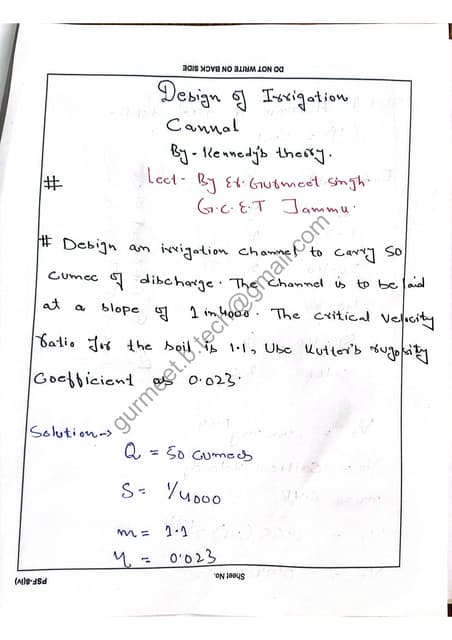



Design of cannal by Kennedy Theory full problem solvedEr. Gurmeet Singh
╠²
Design of cannal by Kennedy Theory
By Er Gurmeet Singh
G.C.E.T JAMMU
CONTACT: Gurmeet.b.tech@gmail.com
Cloud Cost Optimization for GCP, AWS, Azure



Cloud Cost Optimization for GCP, AWS, Azurevinothsk19
╠²
Reduce Cloud Waste across AWS, GCP, Azure and Optimize Cloud Cost with a structured approach and improve your bottomline or profitability. Decide whether you want to outsource or manage it in house. AIR FILTER system in internal combustion engine system.ppt



AIR FILTER system in internal combustion engine system.pptthisisparthipan1
╠²
air filter system in ic engine Environmental Product Declaration - Uni Bell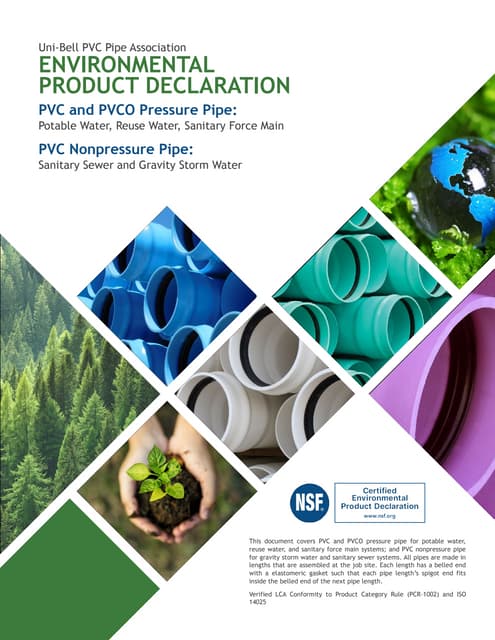



Environmental Product Declaration - Uni BellManishPatel169454
╠²
The Uni-Bell PVC Pipe Association (PVCPA) has published the first North American industry-wide environmental product declaration (EPD) for water and sewer piping, and it has been verified by NSF Sustainability, a division of global public health organization NSF International.GE 6B GT Ratcheting Animation- Hemananda Chinara.ppsx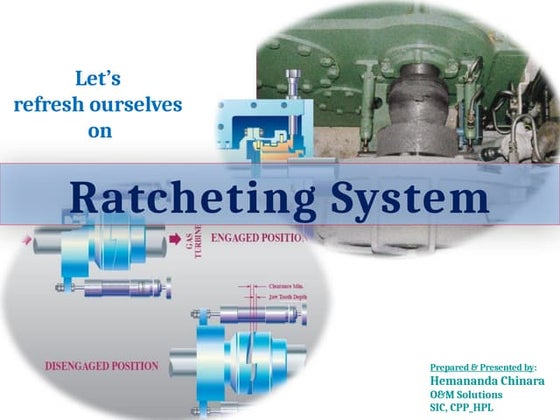



GE 6B GT Ratcheting Animation- Hemananda Chinara.ppsxHemananda Chinara
╠²
GE 6B Gas Turbine Ratcheting Mechanism Animation made by Hemananda Chinara, SIC, CPP, HPL.ESIT135 Problem Solving Using Python Notes of Unit-1 and Unit-2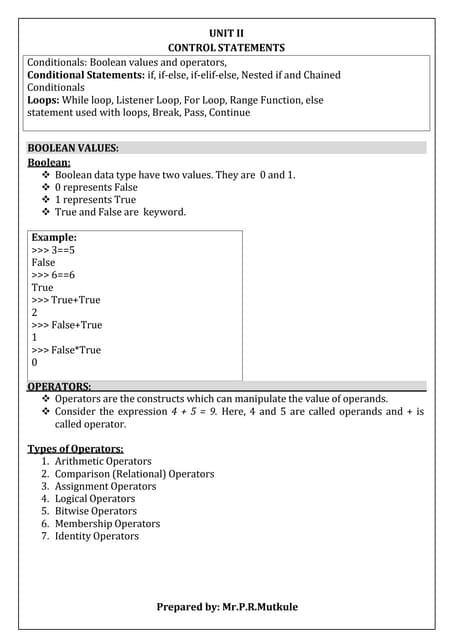



ESIT135 Problem Solving Using Python Notes of Unit-1 and Unit-2prasadmutkule1
╠²
ESIT135 Problem Solving Using Python Notes of Unit-1 and Unit-2Design and Analysis of Algorithms Unit 5



Design and Analysis of Algorithms Unit 5sureshkumara29
╠²
Algorithm design techniques include:
Brute Force
Greedy Algorithms
Divide-and-Conquer
Dynamic Programming
Reduction / Transform-and-Conquer
Backtracking and Branch-and-Bound
Randomization
Approximation
Recursive Approach
What is an algorithm?
An Algorithm is a procedure to solve a particular problem in a finite number of steps for a finite-sized input.
The algorithms can be classified in various ways. They are:
Implementation Method
Design Method
Design Approaches
Other Classifications
In this article, the different algorithms in each classification method are discussed.
The classification of algorithms is important for several reasons:
Organization: Algorithms can be very complex and by classifying them, it becomes easier to organize, understand, and compare different algorithms.
Problem Solving: Different problems require different algorithms, and by having a classification, it can help identify the best algorithm for a particular problem.
Performance Comparison: By classifying algorithms, it is possible to compare their performance in terms of time and space complexity, making it easier to choose the best algorithm for a particular use case.
Reusability: By classifying algorithms, it becomes easier to re-use existing algorithms for similar problems, thereby reducing development time and improving efficiency.
Research: Classifying algorithms is essential for research and development in computer science, as it helps to identify new algorithms and improve existing ones.
Overall, the classification of algorithms plays a crucial role in computer science and helps to improve the efficiency and effectiveness of solving problems.
Classification by Implementation Method: There are primarily three main categories into which an algorithm can be named in this type of classification. They are:
Recursion or Iteration: A recursive algorithm is an algorithm which calls itself again and again until a base condition is achieved whereas iterative algorithms use loops and/or data structures like stacks, queues to solve any problem. Every recursive solution can be implemented as an iterative solution and vice versa.
Example: The Tower of Hanoi is implemented in a recursive fashion while Stock Span problem is implemented iteratively.
Exact or Approximate: Algorithms that are capable of finding an optimal solution for any problem are known as the exact algorithm. For all those problems, where it is not possible to find the most optimized solution, an approximation algorithm is used. Approximate algorithms are the type of algorithms that find the result as an average outcome of sub outcomes to a problem.
Example: For NP-Hard Problems, approximation algorithms are used. Sorting algorithms are the exact algorithms.
Serial or Parallel or Distributed Algorithms: In serial algorithms, one instruction is executed at a time while parallel algorithms are those in which we divide the problem into subproblems and execute them on different processors. Machine Vision lecture notes for Unit 3.ppt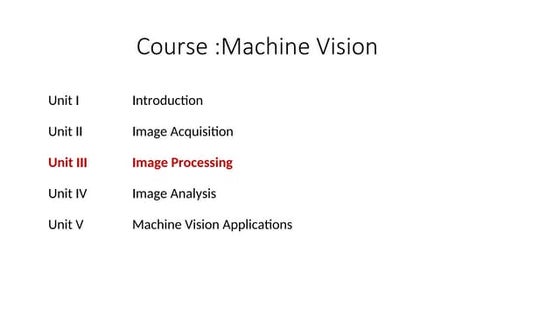



Machine Vision lecture notes for Unit 3.pptSATHISHKUMARSD1
╠²
This is the document related to machine vision subject for final year mechatronics students.Data recovery and Digital evidence controls in digital frensics.pdf



Data recovery and Digital evidence controls in digital frensics.pdfAbhijit Bodhe
╠²
This topic contain information about Data recovery and Digital evidence controls in cyber and digital awarenessOn the Evolution of Solution Spaces Triggered by Emerging Technologies
- 1. CSER 2015 March 18-19, 2015 1 On the Evolution of Solution Spaces Triggered by Emerging Technologies By Alejandro Salado and Roshanak Nilchiani 13th Annual Conference on Systems Engineering Research (CSER) March 18, 2015 Stevens Institute of Technology Hoboken, NJ www.stevens.edu/sse/CSER2015org
- 2. CSER 2015 March 18-19, 2015 2 A year agoŌĆ” Put your logo here on the master slide
- 3. CSER 2015 March 18-19, 2015 3 According to literatureŌĆ” Adding a new requirement results inŌĆ” Put your logo here on the master slide A. Salado, R. Nilchiani, and D. Verma, ŌĆ£A formal theory of requirements engineering: stakeholder needs, system requirements, solution spaces, and requirementsŌĆÖ qualities,ŌĆØ unpublished. Expand solution space Open new regions of solution space Enable better solutions More cost Less solutions
- 4. CSER 2015 March 18-19, 2015 4 Two theoremsŌĆ” Put your logo here on the master slide Theorem 13: A requirement cannot expand the solution space. Proof: Using the inclusion of intersection theorem in set theory ØÉ┤ Ōł® ØÉĄ ŌŖå ØÉ┤ Ōł¦ ØÉĄ, then ØÉČØæåØæåØÉĖØæć ŌŖå ØÉČØæåØæåØÉĖØæć . QED. Theorem 14: A system requirement reduces the solution space. Proof: Using Definition 15, system requirements do not overlap and are applicable to the system. Consequently, the inclusion of intersection theorem in set theory can be reworded as ØÉ┤ Ōł® ØÉĄ ŌŖé ØÉ┤ Ōł¦ ØÉĄ, i.e., since B does not overlap A and A does not overlap B, or in other words ØÉ┤ ŌŖä ØÉĄ and ØÉĄ ŌŖä ØÉ┤, then ØÉ┤ Ōł® ØÉĄ cannot be equal to A or B. Consequently, adding a system requirement reduces the compliant space. QED. A. Salado, R. Nilchiani, and D. Verma, ŌĆ£A formal theory of requirements engineering: stakeholder needs, system requirements, solution spaces, and requirementsŌĆÖ qualities,ŌĆØ unpublished.
- 5. CSER 2015 March 18-19, 2015 5 Question from the audience What ifŌĆ” you add a requirement to use a technology that did not exist at the time of writing the initial set of requirements? Put your logo here on the master slide Would the solution space not be expanded then? NO
- 6. CSER 2015 March 18-19, 2015 6 What is a solution space? Put your logo here on the master slide DSYSTEMS VALID SYSTEMS COMPLIANT SYSTEMSDESIGNED/EXPLORED SYSTEMS
- 7. CSER 2015 March 18-19, 2015 7 What is a solution space? Put your logo here on the master slide DSYSTEMS VALID SPACE COMPLIANT SPACEDESIGN SPACE A. Salado and R. Nilchiani, ŌĆ£A mathematical justification for increasing the size of the solution space to improve the probabilities of designing compliant and affordable systems,ŌĆØ unpublished.
- 8. CSER 2015 March 18-19, 2015 8 Back to the original question Put your logo here on the master slide TIME What ifŌĆ” you add a requirement to use a technology that did not exist at the time of writing the initial set of requirements?
- 9. CSER 2015 March 18-19, 2015 9 What can happen? Put your logo here on the master slide New technology New stakeholder need New requirement 1 3 2 4
- 10. CSER 2015 March 18-19, 2015 10 Case 1: T/-/- Put your logo here on the master slide Theorem 1: An emerging technology that is able to support satisfaction of a given set of stakeholder needs, but that does not create new stakeholder needs for those stakeholders, increases the size of the valid space. Proof: Using Definition 12 in [3], ØæēØæåØæåØæü Øæ¢ Øæć1 = ØæŹ: ØæŹ Ø£¢ ØÉĘØæåØæīØæåØæćØÉĖØæĆØæå Øæć1 ; ØæŻØæÄØæÖ ØæŹ, ØæåØæüØæ¢ = 1 = ØæŹ: ØæŹ Ø£¢ ØÉĘØæåØæīØæåØæćØÉĖØæĆØæå Øæć0 ; ØæŻØæÄØæÖ ØæŹ, ØæåØæüØæ¢ = 1 Ōł¬ ØæŹ: ØæŹ Ø£¢ ŌłåØæåØæīØæåØæćØæć1 Øæć0 ; ØæŻØæÄØæÖ ØæŹ, ØæåØæüØæ¢ = 1 = ØæēØæåØæåØæü Øæ¢ Øæć0 + ØæŹ: ØæŹ Ø£¢ ŌłåØæåØæīØæåØæćØæć1 Øæć0 ; ØæŻØæÄØæÖ ØæŹ, ØæåØæüØæ¢ = 1 ŌŖā ØæēØæåØæåØæü Øæ¢ Øæć0 QED. Theorem 2: An emerging technology that is able to support satisfaction of a given set of stakeholder needs, but that does not create new stakeholder needs for those stakeholders, increases the size of the compliant space if new system requirements are not added to the requirement set. Proof: Using Definition 12 in [3], ØÉČØæå Øæģ Øæ¢ Øæć1 = ØæŹ: ØæŹ Ø£¢ ØÉĘØæåØæīØæåØæćØÉĖØæĆØæå Øæć1 ; ØæŻØæÆØæ¤ ØæŹ, ØæģØæ¢ = 1 = ØæŹ: ØæŹ Ø£¢ ØÉĘØæåØæīØæåØæćØÉĖØæĆØæå Øæć0 ; ØæŻØæÆØæ¤ ØæŹ, ØæģØæ¢ = 1 Ōł¬ ØæŹ: ØæŹ Ø£¢ ŌłåØæåØæīØæåØæćØæć1 Øæć0 ; ØæŻØæÆØæ¤ ØæŹ, ØæģØæ¢ = 1 = ØÉČØæåØæåØæü Øæ¢ Øæć0 + ØæŹ: ØæŹ Ø£¢ ŌłåØæåØæīØæåØæćØæć1 Øæć0 ; ØæŻØæÆØæ¤ ØæŹ, ØæģØæ¢ = 1 ŌŖā ØÉČØæå Øæģ Øæ¢ Øæć0 QED A FORMAL PROOFŌĆ”
- 11. CSER 2015 March 18-19, 2015 11 A practical, simple example Put your logo here on the master slide STAKEHOLDER NEEDS SYSTEM REQUIREMENTS TECHNOLOGIES n1 - Read a book during night at home n2 - Get a warm feeling. r1 - Provide more than 1000 lux. r2 - Provide warm temperature light. T1 ŌĆō Standard bulb. T2 ŌĆō Low consumption white bulb. T3 ŌĆō Low consumption yellow bulb.
- 12. CSER 2015 March 18-19, 2015 12 A practical, simple example Put your logo here on the master slide Technology n1 n2 r1 r2 #ØæēØæåØæåØæü Øæ¢ #ØÉČØæå Øæģ Øæ¢ Standard bulb Y Y Y Y Y Y Low consumption white bulb Y N Y N N N Low consumption yellow bulb Y Y Y Y Y Y 2 2 n1 - Read a book during night at home n2 - Get a warm feeling. r1 - Provide more than 1000 lux. r2 - Provide warm temperature light.
- 13. CSER 2015 March 18-19, 2015 13 Case 1: T/-/- Put your logo here on the master slide Technology n1 n2 r1 r2 #ØæēØæåØæåØæü Øæ¢ #ØÉČØæå Øæģ Øæ¢ Standard bulb Y Y Y Y Y Y Low consumption white bulb Y N Y N N N Low consumption yellow bulb Y Y Y Y Y Y Yellow LED Y Y Y Y Y Y Green LED Y N Y N N N Old (T0) 2 2 New (T1) 3 3 n1 - Read a book during night at home n2 - Get a warm feeling. r1 - Provide more than 1000 lux. r2 - Provide warm temperature light.
- 14. CSER 2015 March 18-19, 2015 14 Case 2: T/-/r Put your logo here on the master slide Technology n1 n2 r1 r2 r3 #ØæēØæåØæåØæü Øæ¢ #ØÉČØæå Øæģ Øæ¢ Standard bulb Y Y Y Y N Y N Low consumption white bulb Y N Y N N N N Low consumption yellow bulb Y Y Y Y N Y N Yellow LED Y Y Y Y Y Y Y Green LED Y N Y N Y N N Old (T0) 2 2 New (T1) 3 1 n1 - Read a book during night at home n2 - Get a warm feeling. r1 - Provide more than 1000 lux. r2 - Provide warm temperature light. r3 - Use LED technology.
- 15. CSER 2015 March 18-19, 2015 15 Case 3: T/n/- Put your logo here on the master slide Technology n1 n2 n3 r1 r2 #ØæēØæåØæåØæü Øæ¢ #ØÉČØæå Øæģ Øæ¢ Standard bulb Y Y N Y Y N Y Low consumption white bulb Y N N Y N N N Low consumption yellow bulb Y Y N Y Y N Y Yellow LED Y Y N Y Y N Y Green LED Y N N Y N N N Color adaptive based on sensing Y Y Y Y N Y N Old (T0) 3 3 New (T1) 1 3 n1 - Read a book during night at home n2 - Get a warm feeling. n3 - Adapt the color temperature of the light according to the feelings of a reader. r1 - Provide more than 1000 lux. r2 - Provide warm temperature light.
- 16. CSER 2015 March 18-19, 2015 16 Case 4: T/n/r Put your logo here on the master slide Technology n1 n2 n3 r1 r2 r3 #ØæēØæåØæåØæü Øæ¢ #ØÉČØæå Øæģ Øæ¢ Standard bulb Y Y N Y - N N N Low consumption white bulb Y N N Y - N N N Low consumption yellow bulb Y Y N Y - N N N Yellow LED Y Y N Y - N N N Green LED Y N N Y - N N N Color adaptive based on sensing Y Y Y Y - Y Y Y Old (T0) 3 3 New (T1) 1 1 n1 - Read a book during night at home n2 - Get a warm feeling. n3 - Adapt the color temperature of the light according to the feelings of a reader. r1 - Provide more than 1000 lux. r2 - Provide warm temperature light. (deleted) r3 - Adapt temperature to reader emotion.
- 17. CSER 2015 March 18-19, 2015 17 Wrapping up Put your logo here on the master slide If a NEW technology does NOT change the stakeholder needsŌĆ” ŌĆ”then adding a requirement reduces the compliant space FORMAL PROOF + PRACTICAL EXAMPLE What about obsolescence?




